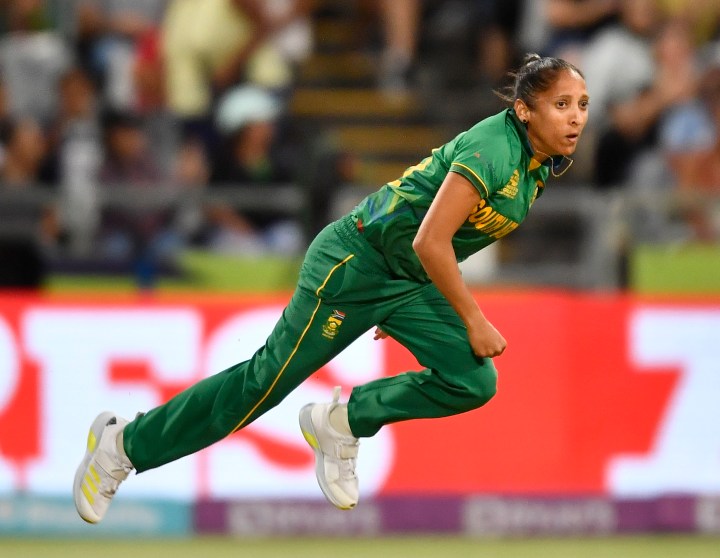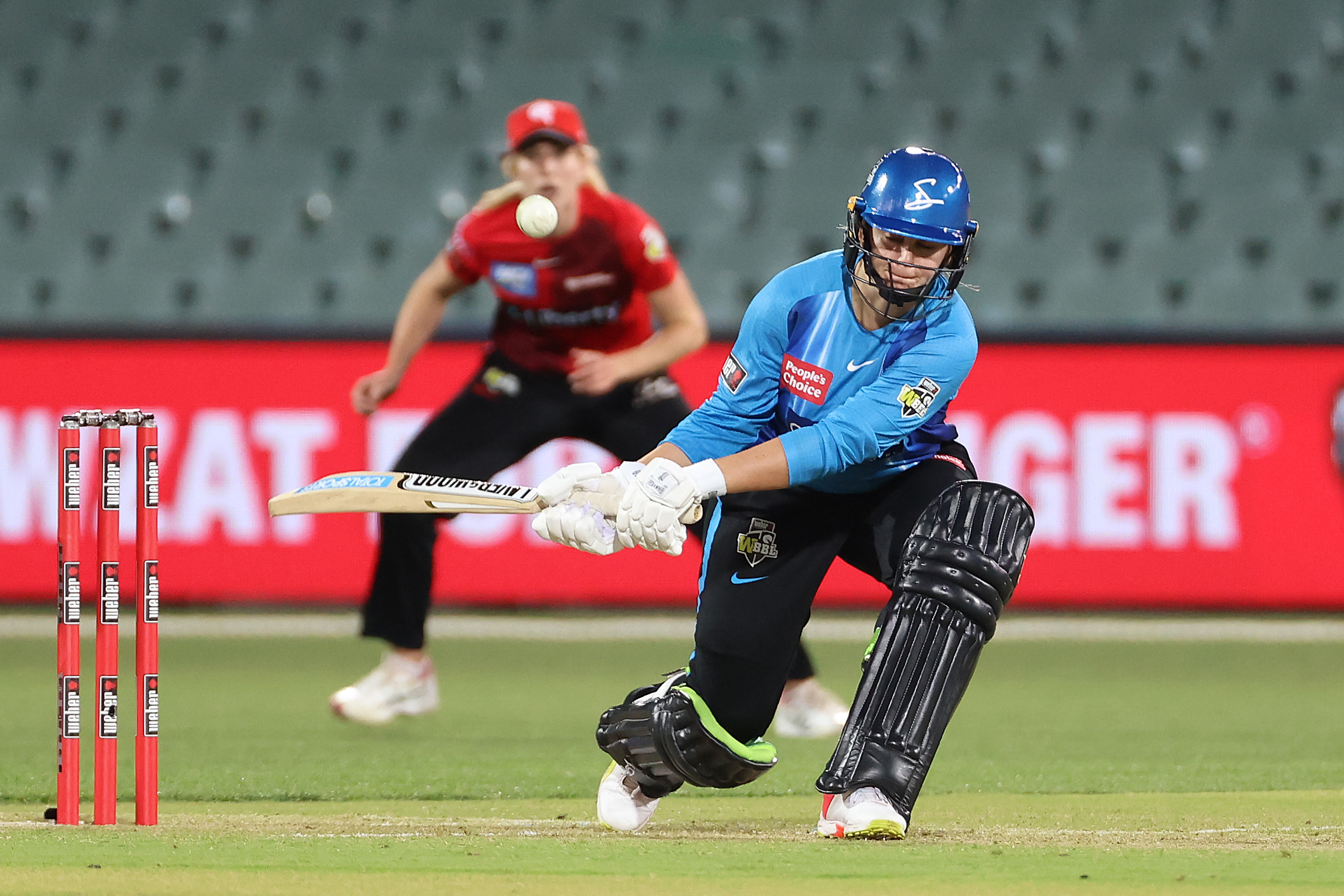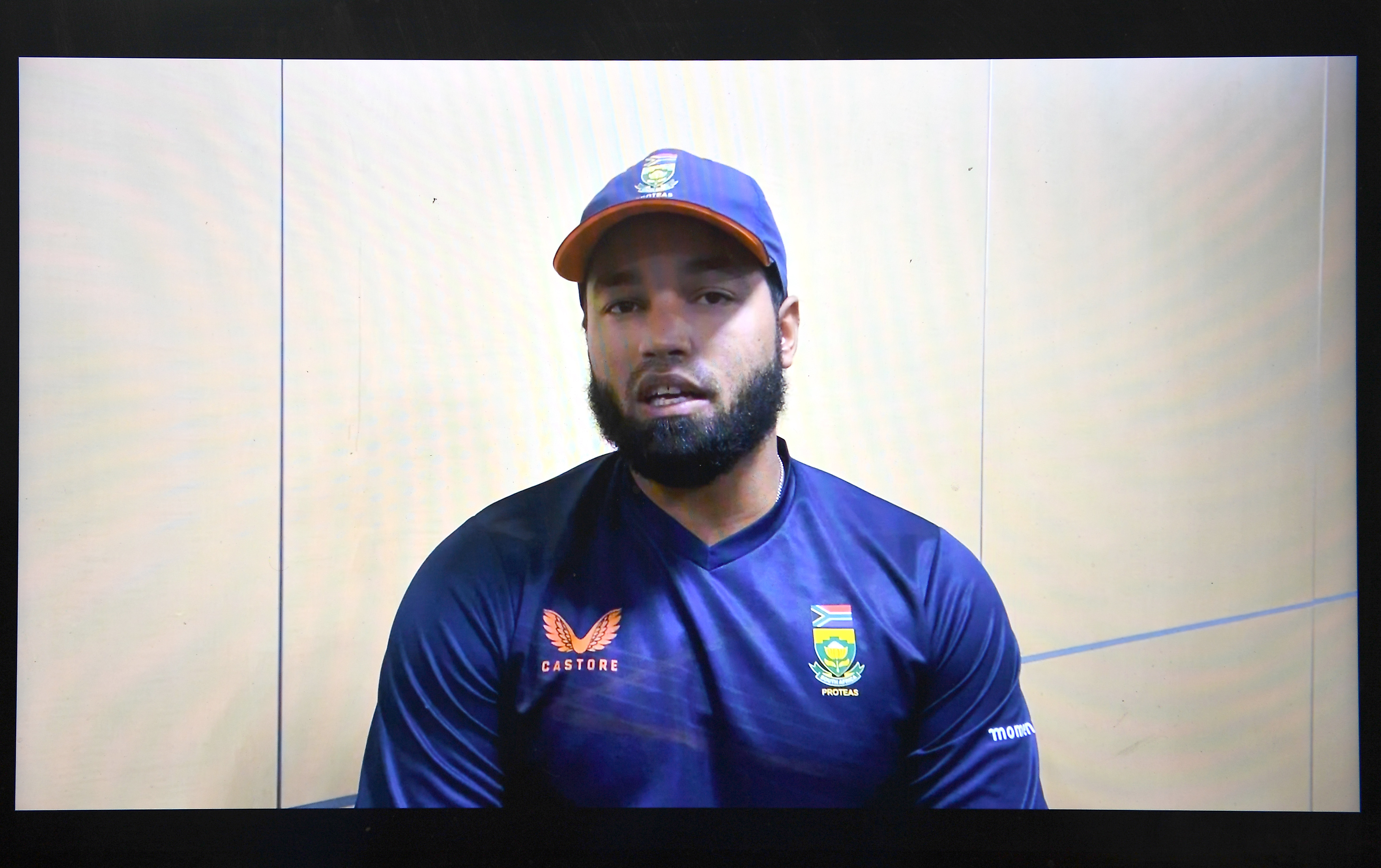PERFORMANCE TRANSFORMATION
How player fitness standards in South African women’s cricket have evolved

South Africa still has some way to go to match the likes of Australia and England in maximising player fitness, but the gap between the elites and SA has closed steadily over the past three years.
Dané van Niekerk was left out of South Africa’s World Cup squad for the T20 World Cup on home soil despite being the fittest she’s been in her career.

Dané van Niekerk of the Adelaide Strikers bats during The Challenger Women’s Big Bash League Finals match in 2021 against the Melbourne Renegades at Adelaide Oval, Australia. (Photo: James Elsby / Getty Images)
That’s how much the fitness standards and importance have changed over the past few years in SA women’s cricket — that a player of world-class ability and leadership can be omitted from a World Cup for not meeting one of the required running measurements.
Fitness was never taken so seriously in South African women’s cricket before 2019. In fact, up to that point, there was no data measuring the players’ fitness levels.
“The general professionalism of the group wasn’t at the standard that I was happy with, coming from the men’s game,” said Zane Webster, the Proteas Women’s strength and conditioning coach. “I felt that it lacked that extra 10%-15% professionalism.

Proteas Women’s strength and conditioning coach Zane Webster. (Photo: Ashley Vlotman / Gallo Images)
‘Astounding achievement’
“It’s astounding what they’ve managed to achieve with regard to transforming their approach to fitness, but more importantly, their lifestyle.”
The increased levels of professionalism have steadily been implemented in the team. There were some squabbles and disagreements at first, but everyone in the team has since taken enthusiastically to the added individualised training.
There is no one player that stands head and shoulders above the rest with regard to their fitness and lifestyle transformation since 2019.
But Webster uses opening batter Laura Wolvaardt and all-rounder Chloe Tryon as examples of hard work off the field paying off on the field.
“Laura Wolvaardt’s fitness has never been an issue in terms of her conditioning and her aerobic capacity. She’s always been supremely fit,” said Webster.
“But areas where we identified with her — where she’s got a lot better — she’s become a gym savage where previously she wasn’t really into lifting heavy weights. Now you’ll find her in the gym more than anyone else.
“She’s had issues with her mobility, which could be a high risk for injury, and she’s come on in leaps and bounds.”
The reason Wolvaardt is always consistent with bat in hand is that she never allows her strength and conditioning levels to drop, according to Webster.
“Someone like Chloe [Tryon], the big thing for her was weight loss. The intervention that was put in place; I can’t even put into words the way she bought into the process and stuck to it. She completely transformed her lifestyle,” added Webster.
Changing culture
Fitness standards and implementation have come into the spotlight recently because of South Africa’s desire to move one step ahead of the opposition.
Locker rooms are filled with players and management from varying countries in tournaments around the world such as The Hundred, Women’s Big Bash League and the newly formed Women’s Premier League.
Consequently, there aren’t many tactical secrets or advantages teams have over their opponents in modern-day cricket.
The skill level between countries is also constantly narrowing. So, teams look for areas where they can find an advantage, and in recent times that has become fitness.
“When you look at where the white-ball game is at the moment, you see how close games usually get. You have to ask, ‘Do you have the ability to run three hard twos at the end of the innings when you’ve been batting for the last 18 overs?’” asks Webster.
“Cricket requires skill, but without fitness, your concentration can be negatively impacted.”
There are several factors outside training that affect athletes’ fitness and performance, including the consumption of alcohol, a substance that feels as much a part of the culture of cricket as the bails and stumps.
“It’s how you sleep, what you eat. It’s what you’re putting into your body from a liquid perspective,” said Webster.
“Alcohol is something that I don’t know that we’ll ever get rid of in cricket.
“I know in other sports they’re very strict on it, like you’re not allowed to have alcohol 24 hours after a game in football unless they’re winning a competition.
“Alcohol is such a big part of the culture in cricket. Us as medical staff, we cringe because we know the negative impact that that has on recovery.”
Fitness vs skills
There is a direct correlation between a player’s fitness and their ability to succeed on the field, says Webster.
“It’s no secret that the fitter you are, the more resilient you are as a player or athlete.
“You will have greater longevity in the sport and you’ll have the necessary base to execute your skills at a high intensity for a long period of time.
“There’s also the aspect of injury risk. The fitter and stronger you are, the less risk you are at of picking up injuries, particularly where the game currently is and where it’s moving to.”
New cricket tournaments are popping up almost monthly across the world, which only serves to further congest the global calendar.
This affects the fitness regimens of current cricketers compared with the ones from a bygone era of the game.
Visit Daily Maverick’s home page for more news, analysis and investigations
“In the old days, international cricketers would have a period throughout the year where they would go through an off-season,” said Webster, “where they have eight to 12 weeks to recover from the previous season’s workloads, to sort out any niggles that they might have picked up through the season and finally to get themselves as fit and strong as physically possible to prepare themselves for the season ahead.
“The modern-day international cricketer doesn’t have that luxury. There’s no more important time than now in international cricket for players to be as fit and as resilient as they can be.
“If you put it into numbers, in 1,000 days cricketers will have maybe 200 rest days out of the 1,000. The rest of the days you’ll be training, in the gym, on the field and you’d be playing cricket.
“If you look at the ratio, that’s not a lot of rest time. So, obviously being better conditioned, the chances of you going through all that without dropping your standard of on-field performance and staying injury-free increases significantly.”
The fitness standards in women’s cricket have increased significantly in South Africa, but there is still room for improvement if the country is to reach the summit of the game. DM
















 Become an Insider
Become an Insider
Comments - Please login in order to comment.